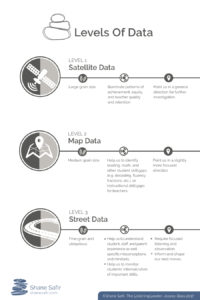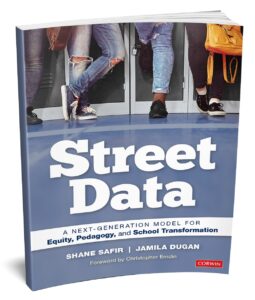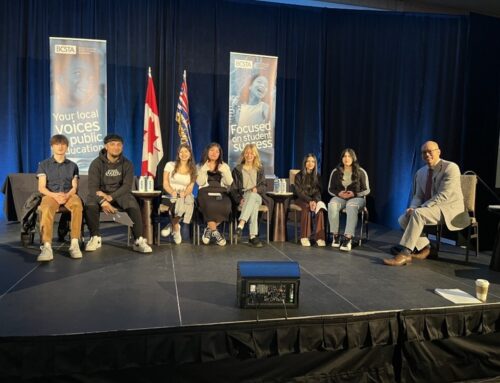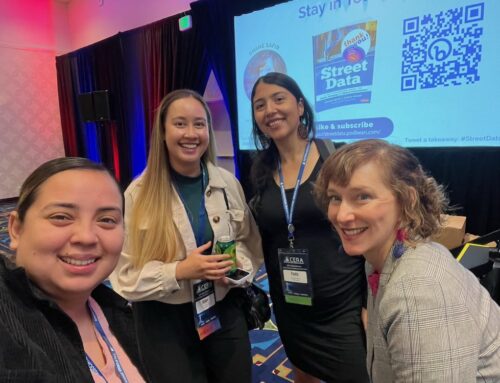Culturally responsive teaching (CRT) has become a central concept in the education world. My colleague Zaretta Hammond offers a brilliant and accessible framework in her book Culturally Responsive Teaching and the Brain: Promoting Authentic Engagement and Rigor Among Culturally and Linguistically Diverse Students (Corwin, 2014). One of the questions that my book, The Listening Leader, tries to address is this: How do we know we’re culturally responsive if we’re not listening to our students?
In Chapter 1, I talk about how disconnected most “data” has become from the lived experiences of students and encourage readers to think about three levels of data:
- Level 1 “satellite” data: test scores, D/F rates, attendance rates, etc.
- Level 2 “map” data: reading inventories, teacher-created common assessments, student surveys, etc.
- Level 3 “street” data: the type of narrative evidence that can only be gathered through listening and close observation
As we struggle with how to increase equity of student outcomes, we must learn to triangulate all three levels of data. For a PDF of this graphic: Levels of Data (Figure 1.3)
Street data illuminates the barriers to opportunity and access that many students face. In his keynote at the 2017 Carnegie Foundation Summit, scholar and practitioner Jeff Duncan-Andrade argued, “The most successful educators are first and foremost ethnographers of the communities they serve.” Street data offers a concrete, respectful, and student-centered way to develop an ethnographic practice. It builds our muscle at listening to student voice and observing student engagement. It also builds relational trust with students as we value and honor their experiences.
Here are 6 ways you can begin to gather street data tomorrow:
- One-on-One Interviews: Interview a student one-on-one to understand the root causes of learning or behavioral challenges. Identify a focal student who is struggling in your class or school to meet with you at a time that works for both of you. Tell the student that your purpose is to listen and get to know him or her better so that you can be a better teacher or leader on his or her behalf. See page 253 of The Listening Leader for a set of questions geared toward adults that you can easily adapt.
- Focus Groups/Audio Interviews: Another powerful way to listen to students is through confidential focus groups or audio interviews with a small group. Convening multiple students in the same space can lower anxiety levels and allow young people to build off one another’s ideas. Team up with a colleague, find a quiet classroom, and invite half a dozen students to participate. If you audio record the session, edit it to a digestible segment to share with your grade-level team, department, or PLC. See pages 174-175 of The Listening Leader for an example of how audio interviews can work.
- Feedback Interviews: These are similar to audio interviews, but instead of asking students to tell their stories, you ask them for specific feedback on your teaching practice. This can be a preliminary step toward co-generative dialogues, a structured practice for getting student feedback (Emdin, 2016). Feedback interviews are described on page 177-178 of The Listening Leader.
- Shadow a Student Challenge: Put on your tennis shoes and “be” one of your students for an entire day. Get his or her permission, dress comfortably, meet your student before school, and approach observation with a notebook and an open and curious mind. Be sure you set aside time to study the experiential data you’ve gathered, looking for patterns and raising questions. See pages 172-173 for more details.
- Classroom Participation Tracker: Oral participation is one important indicator of engagement and inclusion. Create a simple “equity tracker” with students’ names on the left side and a column for each day of the week. Carry it around on a clipboard, and each time you call on a student, or someone volunteers to speak, jot down a tally mark. At the end of the week, add up your marks and analyze the data: Who is participating the most? Who is participating the least? What patterns of participation do you see with respect to race, gender, language of origin, learning ability, location in the room, etc.? Set a small participation goal for the following week. This practice is profiled in a previous Edutopia blog called “3 Practices to Promote Equity in the Classroom.”
- Academic Language Tracker: The ability to internalize and use academic language in class is a gatekeeper skill for many English Language Learners and historically marginalized students. By paying attention to which students are and are not employing academic language, you’ll gain critical insight with which you can develop learning scaffolds. Select one or two focal students to listen to during class, preferably when they are engaged in a group task or discussion. Script the student’s comments or audio-record them, then take time to analyze the transcript. How many times does the student incorporate academic language? If they attempt to do so, but struggle with correct usage, note that as well. What evidence do you hear that the student understands the structure of academic language, not just key terms? Can the student participate in ways that would make him or her feel confident in a college classroom? If not, how will you support this student?
How do you gather street data? What benefits have you seen from listening deeply to students?

 Enter your email here and get a free copy of the first chapter of Street Data!
Enter your email here and get a free copy of the first chapter of Street Data!



Leave A Comment
You must be logged in to post a comment.